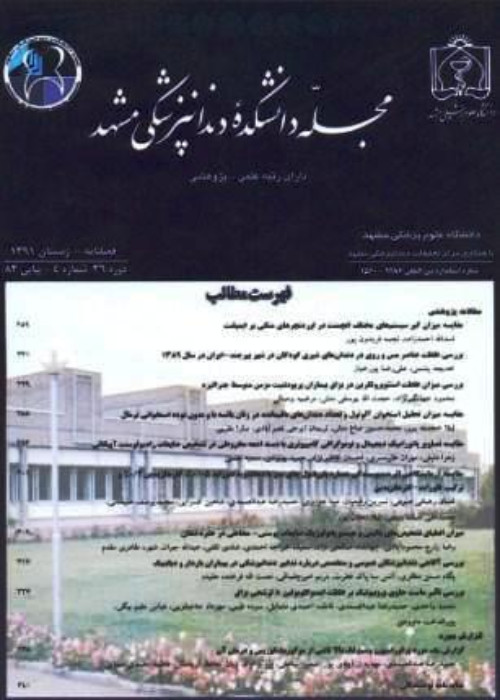Exposure to Anxious Patient Encounters Among General Dentists and Employment of Behavioral Guidance Techniques
Bakground:
Considering the role of fear and anxiety management in the success of treatment and the need for dentists to be familiar with anxiety control protocols, we assessed the level of dentists' exposure to patients with dental fear and anxiety and measured the use of anxiety management techniques in this shudy.
This cross-sectional study was carried out on 360 dentists working in Isfahan City, Iran, in 2020. A 20-item researcher-made questionnaire was designed and validated. The first part of this questionnaire collected information about demographic characteristics, including age, gender, graduation year, and working hours per day and week. The second part included questions to assess dentists’ knowledge in identifying patients with dental anxiety and their management method, the frequency of their exposure to anxious patients in different age groups, and the frequency of using behavioral and pharmacological techniques to manage anxiety. The validity of the questionnaire was measured by calculating the content validity index and its reliability through test-re-test. The questionnaire was prepared electronically and distributed in dentists’ virtual groups. Data were analyzed by SPSS 22. Comparisons between dentists' performance and demographic indicators, such as work experience, gender, and age groups were calculated using Chi-square and correlation coefficients (α=0. 05).
Out of 360 distributed questionnaires, 311 were filled out (response rate of 86%). The frequency of male dentists was 49. 8% (n=155), and the mean work experience was 10. 3±9. 3 (1-38 years). Overall, the mean of dentists' exposure to patients with dental anxiety was 27. 1±11. 23%. The frequency of using different anxiety control techniques was 82. 9% for Tell-Show-Do, 71. 6% for distraction, and 22. 5% for cognitive-behavioral techniques. The use of cognitive-behavioral methods in the control of dental anxiety showed a significant relationship with gender (P<0. 001). It was also found that medication administration was lower in women dentists (P<0. 001). Regarding the ability to control patients with dental anxiety, appreciably 80% of dentists with more than 20 years of experience reported their ability as very or relatively well.
Despite the exposure of dentists to anxious patients in different age groups, their knowledge to manage them seems insufficient. They rarely used cognitive-behavioral techniques and muscle relaxation to manage anxious patients. The application of nitrous oxide, sedatives, and hypnotherapy was not very frequent. Therefore, the consideration of educational courses for dentists to identify and manage anxious patients for successful treatment and improve their health seems necessary.
- حق عضویت دریافتی صرف حمایت از نشریات عضو و نگهداری، تکمیل و توسعه مگیران میشود.
- پرداخت حق اشتراک و دانلود مقالات اجازه بازنشر آن در سایر رسانههای چاپی و دیجیتال را به کاربر نمیدهد.


